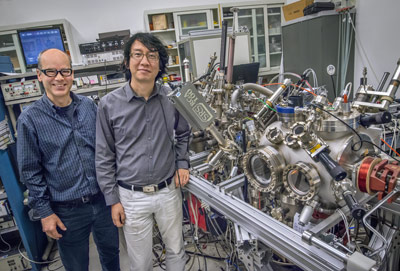
In addition to negative electrical charge, electrons also carry a quantum mechanical property known as “spin,” which arises from tiny magnetic fields created by their rotational momentum. Therefore, a flow of electrons creates both charge and spin currents. Charge currents are well understood and serve as the basis for today’s electronic devices. Spin currents are just beginning to be explored as the basis for the emerging new field of spintronics. Coupling the flows of charge and spin currents together opens the door to yet another new field in electronics called “spin–orbitronics.” The promise of spin-orbitronics is smaller, faster and far more energy efficient devices through solid-state magnetic memory.
The key to coupling charge and spin currents lies within magnetic domains, regions in a magnetic material in which all of the spins of the electrons are aligned with one another and point in the same direction. Applying a technique called “SPLEEM,” for Spin-Polarized Low Energy Electron Microscopy, to a thin-film of iron/nickel bilayers on tungsten, Foundry researchers, Gong Chen and Andreas Schmid and their collaborators were able to stabilize and switch between the two types of domain walls. This countrol could present new opportunities to design spin–orbitronic devices.

